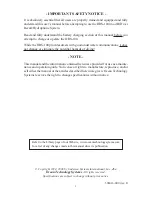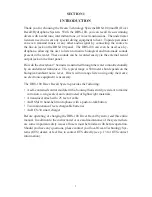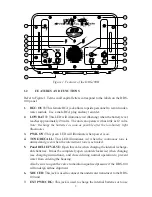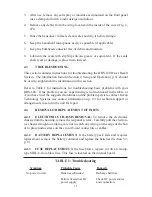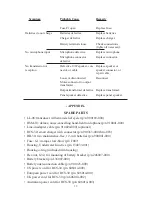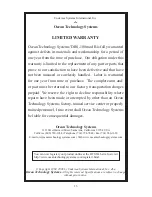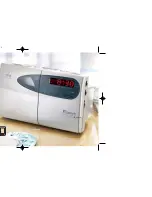
3. After use, remove any salt spray or moisture accumulated on the front panel
(use a damp cloth with a mild detergent solution).
4. Remove any debris from the o-ring located on the inside of the cover (Fig. 2,
#21).
5. Rinse the transducer in fresh, clean water, and dry it before storage.
6. Keep the hand-held microphone as dry as possible (if applicable).
7. Keep the bulkhead connector free of debris and moisture.
8. Lubricate the seals with Zip Slip silicone grease or equivalent. If the seals
show wear or damage, replace them instead.
4.3
TROUbLESHOOTING
This section contains instructions for troubleshooting the DRS-100 Diver Recall
System. The information found in Section 2, Setup and Operation (p. 5), should
be used to supplement the information in this section.
Refer to Table 1 for instructions for troubleshooting basic problems with your
DRS-100. If the problem you are experiencing is not mentioned in the table, or
if you have tried the suggested solutions and the problem persists, contact Ocean
Technology Systems (see contact information on p. 13) for technical support or
arrangements to send in the unit for repair.
4.4
REMOVAL OR REPLACEMENT OF PARTS
4.4.1
ELECTRONICS CHASSIS REMOVAL:
To remove the electronics
chassis from the housing, remove the ten panel screws. Carefully pull the electron-
ics chassis straight out, taking care not to catch any wiring on the edge of the box
or to place undue stress on the circuit board connectors or cables.
4.4.2
bATTERY REPLACEMENT:
If the battery pack fails and requires
replacement, remove the battery container and replace the batteries (Section 3.2,
p. 8).
4.4.3
FUSE REPLACEMENT:
If the fuse blows, replace it with a 6.0-amp,
type MDL-6 slow-blow fuse. This fuse is located on the internal board.
11
TAbLE 1: Troubleshooting
Symptom
Probable Cause
Remedy
No power to unit
Batteries exhausted
Recharge batteries.
Failure of external DC Check DC power source
power supply and connection.


